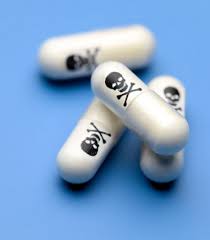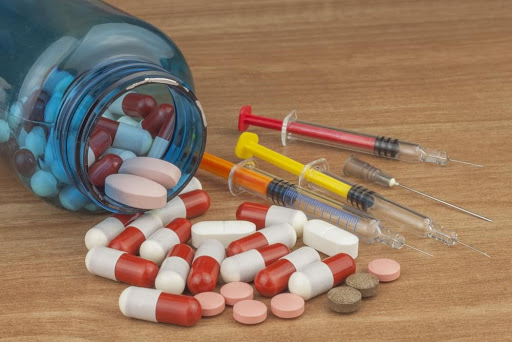According to the law of December 14, 2000, n. 376 “means the doping of the administration or intake of drugs or biologically or pharmacologically active substances, as well as the acceptance or submission of medical practice that is not justified by pathological conditions and suitable for changing the psychophysical or biological states of the body in order to change the competitive performance of athletes.” The term doping is of English origin, in turn derived from the Southeast African café idiom, in which the term dop indicates a stimulating liquor used in religious ceremonies; according to some sources, it comes from the Flemish doop, which means mix, mix, mash.

In the world of sports, doping boils down to the illegal use of drugs or drugs to improve athletic performance or during competitive events. Unfortunately, this practice has existed since ancient times: Greek athletes used a meat diet associated with stimulants; in Roman times, horses used drugs, were used in arenas, and also in gladiators to intensify their aggression; the peoples of East, South America and the Vikings took substances to combat fatigue.
In the twentieth century, sport gradually recovered ancient values and renewed the spirit of competition: in countries like East Germany and Romania, the science of doping and laboratory-created primates began to develop in alarming ways. The first scientific tests were carried out on horses by the chemist Bukowsky in Vienna in 1910, while the western countries, faced with constant victories by the athletes of Eastern Europe, invested heavily. economic resources: significant cash prizes have been awarded for international victories or records to improve the performance of athletes.
At the 1952 Olympics, it was first suggested that some athletes resorted to drugs; With the widespread use of anabolic drugs, the practice of doping experienced another alarming increase two years later, in 1954. During the 1964 Olympics held in Tokyo, the first doping tests were introduced and in 1965 France was the first to pass legislation on the subject. In Italy, the first analytical laboratory was opened in Florence in 1961, and a law was passed in 1971 to punish the use of prohibited substances for athletes, as well as condemn those who supply them. In accordance with Act No. 522 of 1995, Italy ratified the Anti-Doping Convention, signed in 1989 by Strasbourg by the Council of Europe; Finally, in 2000, criminal significance was introduced and the creation of a control commission.
Classification of alloying substances
– Anabolic. They are mainly composed of anabolic steroids, they are artificial and chemically synthetic substances that act like testosterone (male hormone): they are used to increase strength by increasing muscle mass and decreasing fat mass. Long-term use of these drugs causes sexual impotence, hormonal imbalances, tendon brittleness and the formation of heart attacks, blood clots, tumors and depression. One of the most well-known anabolic steroids is nandrolone, a hormone that drives muscle gain: an athlete is considered “positive” when the concentration found in urine is greater than two nanograms (one nanogram = one billionth of a gram). / span>
– Stimulants. This group consists mainly of amphetamines and derivatives, as well as cocaine, caffeine and ephedrine. They allow you to better endure physical exertion, reducing appetite and fatigue: however, an athlete usually exceeds their limits, risking serious damage to muscles, tendons and the cardiovascular system.
– Drugs. This group includes opium and its derivatives, including heroin and morphine. They remove sensitivity to pain (in fact, they are often prescribed for boxers). They are addictive.
– Beta blockers. Synthetic foods that cause a slowdown in the heart rate by affecting the beta function of the nervous and sympathetic systems, so you don’t feel really tired. They cause sleep disturbances, bronchial asthma, hallucinations and of course the risk of heart attack.
– Protein, peptide and similar hormones. This category includes those hormones that athletes illegally use to increase muscle, endurance and great effort: somatanthropic hormone (GH – causes heart attack, diabetes and an increase in the frequency of tumors), corticotropin (ACTH – causes osteoporosis, water retention, ulcers, obesity) , chorionic gonodotropin (hCG – causes migraine, heart attack, depression) and erythropoietin (EPO – increases the load of red blood cells, allowing more oxygen to be transported, but increasing the risk of clogged arteries and capillaries, as well as hematological diseases, kidney dysfunction, bone marrow aplasia).
Doping today
From the 90s to the present day, the phenomenon of doping, its practice and demonization are rapidly developing in the sports and social spheres. Convicted through a series of laws that unfortunately try to define the line between legal and illegal, the practice of drug use has acquired dangerous connotations, has come to be seen as extremely negative from a moral point of view, and harmful from a physical point of view; however, it continued to exist and new cases in athletes who were positive for control analysis were on the agenda.

All of this shows the world a side to sport that needs to be eradicated completely, because doping, in addition to cheating against those who regularly participate in competitions, seriously endangers the health of an athlete; However, in the modern world of sports, with large sums of money promised to winners and a high level of competition, how morally does it help an athlete stay away from doping?
More than a cure based on moral, defamatory and contemptuous considerations, the practice of doping, in order to be eradicated, requires constant and reliable monitoring by predisposed authorities; Talking too much about it can increase interest, remembering that doping hurts, but with it “you run faster.” How long will we have to live with suspicion and doubt that one of the “clean” athletes can hide at least one doping, perhaps the one who will go to win the race? How long will sports have the guts to promise athletes fame, money and fame in exchange for the safety of their own lives?
doping victims
Ben Johnson

The great bluff in athletics, and certainly one of the most sensational that sports history recalls, is certainly associated with Ben Johnson. Born in Jamaica in 1961 to a poor family, he emigrated to Toronto at the age of 14 and accepted Canadian citizenship here. Physically gifted, he devoted himself to speed sports from an early age, followed by coach Charlie Francis (Canadian champion in the 1960s).
Johnson, who debuted in 1980, was supposed to be the heir to Carl Lewis, Son of the Wind, Johnson’s age, but earlier. They first met in a 1980 race with the young Pan-American Sudbury (Lewis won and Ben finished sixth). In 1984, a second meeting took place 100 meters from the Los Angeles Olympics; in this case, Big Ben (as his explosive sprint was called) received bronze (10-22) behind Lewis and Sam Graddy.
Determined to finally surpass his rival, over the course of two years Johnson increased his performance (in 1986 he ran 60 meters in 6 “50 and made a world record) to the point that someone, including Vanni Loriga from Corriere dello Sport wondered how certain “sudden and wonderful progress” was possible.

Johnson strove for a 100-meter record and humiliation of his rival Lewis: he realized his plan in two “challenges of the century.” The first took place on August 30, 1987 at the World Championships in Rome: Johnson ran in 9 “83, a new world record, and beat his opponent – amazed – with a meter. Second on September 24, 1988: At the Seoul Games, he ran at 9 “79, leaving Lewis at 9” 92. This last time, the gap in Big Ben was so great that he looked over his shoulder and raised his arm in victory before arriving. / p>
“This championship will last 50 years,” he said. But after 24 hours, the news came out: the athlete received a positive result for doping control, taking a very powerful anabolic steroid Stanozolol https://steroidsbuyonline.com/store/injections-steroids/stanozolol-injection/; Johnson spoke innocently of a conspiracy orchestrated by Lewis’s agents; but the Canadian government launched an investigation and soon discovered an entire Canadian clan of doped athletes, “coordinated” by coach Charlie Francis and physician Jamie Astafan. It was these last subjects, over 50 hours or more of deposition, that Johnson had been taking steroids, testosterone, GH (growth hormone) and diuretics to remove traces since 1981.

On June 12, 1989, 273 days after the victorious bluff, Big Ben tearfully admitted: “Stay clean,” he said, addressing young athletes: “Don’t take drugs. Don’t cheat sports. ” All of his records were cleared and he was suspended for two years; the punishment for an athlete who just confessed to doping almost from the moment of his debut on the track was not even so severe.
In 1990, he tried to return to racing; at the Barcelona Games, he was eliminated in the semifinals, but in 1993, at the end of the race in Montreal, he was tested positive for testosterone and was therefore disqualified for life. In recent years, he has spoken about the conspiracy and, on the occasion of the presentation of his autobiography, which will be released next September, he announced that he will explain in detail that during his run he was not the only one to use drugs. His coach, Francis, who was banned for life by the Canadian federation after admitting that he supplied illicit substances to Johnson, passed away last May.
Ben Johnson’s deception, regardless of its epilogue, was by far the most damaging to the world of athletics. At the same time, he was the first to demonstrate the progress made over the past few years by the doping industry, which in all respects has become a science as dangerous as it is invisible. After Johnson, many other athletes tried to win with doping: many were discovered, many – perhaps – got away with it. How long will the sport have to live with the suspicion that victory is the result of nothing but deception?
Marion Jones

Fortunately or unfortunately, Marion Jones’ story is so rich in twists and turns that it certainly deserves a cinematic transfer. Also, because it has played a critical role in the history of anti-doping procedures.
Jones was born in 1975 in Los Angeles and was an exceptional athlete from the start; phenomenon, since a young girl, after a very happy start in athletics, she prefers basketball. Two fractures in her left leg are forcing her to return to speed since 1996. She wins 100 meters and 4×100 at the World Championships in Athens, and in 1998 she won 19 of 19 races. The years around 2000 are her path: she is leaving. first husband of Cottrell J. Hunter, a doping suspension pitcher, and has accompanied Tim Montgomery since 2002 (who will be suspended in 2005 …). At the Sydney Olympics, he won 3 gold and 2 bronze medals.
Alternating success with unsuccessful defeats, Marion Jones stops in 2003 for pregnancy and childbirth, and she does not win any medals at the 2004 Athens Games. In 2006, he seems to be getting better, winning 6 races in 100 meters. Her season is abruptly interrupted by a doping charge: it’s August 17, 2006. In Zurich, on the eve of the most important meeting of the Golden League, she receives a phone call and is informed that she has tested positive for a doping to which she was subjected. June during the US Championship in Indianapolis.
Counter-analyzes sensationally justify it; an emerging motivation indicates an error in the analysis of the first test tube with organic liquid. “I have always said that I have never taken doping substances,” he says. “I am happy that the scientific process has proven this. I’m in seventh heaven and can’t wait to get back to racing. ” But false laboratory mistakes – and the good fortune of certain events – can do nothing against remorse.

In May 2006, at 31, the black panther reappeared on the track and won 100 at the meeting in Xalapa. But after the third marriage with Obadel Thompson and the second motherhood, recognition comes unexpectedly. The athletics champion admits in a New York court that she is guilty of two different offenses involving taking steroids to improve her performance: she explains that she uses doping (including insulin mixed with GH). and anabolic steroids) since 2000. He also announces his retirement from athletics and thus ruins an extraordinary career too often burdened with suspicion and accusations. Jones has been officially suspended for two years and the International Athletics Federation has canceled all results from September 1, 2000, including the relay.
On January 11, 2008, after a sports verdict, the court came: six months in prison for deceiving federal agents about the Balko case, as well as a bank fraud related to Montgomery’s ex-husband. It is the ultimate career epilogue that could go down in athletics history, and that, instead, athletics history will remember in a completely different light. Sentenced to trial in White Plains Court, she was sentenced to 6 months in prison for false testimony made in 2003 in the context of the Balco investigation, which also involved her husband Montgomery.



